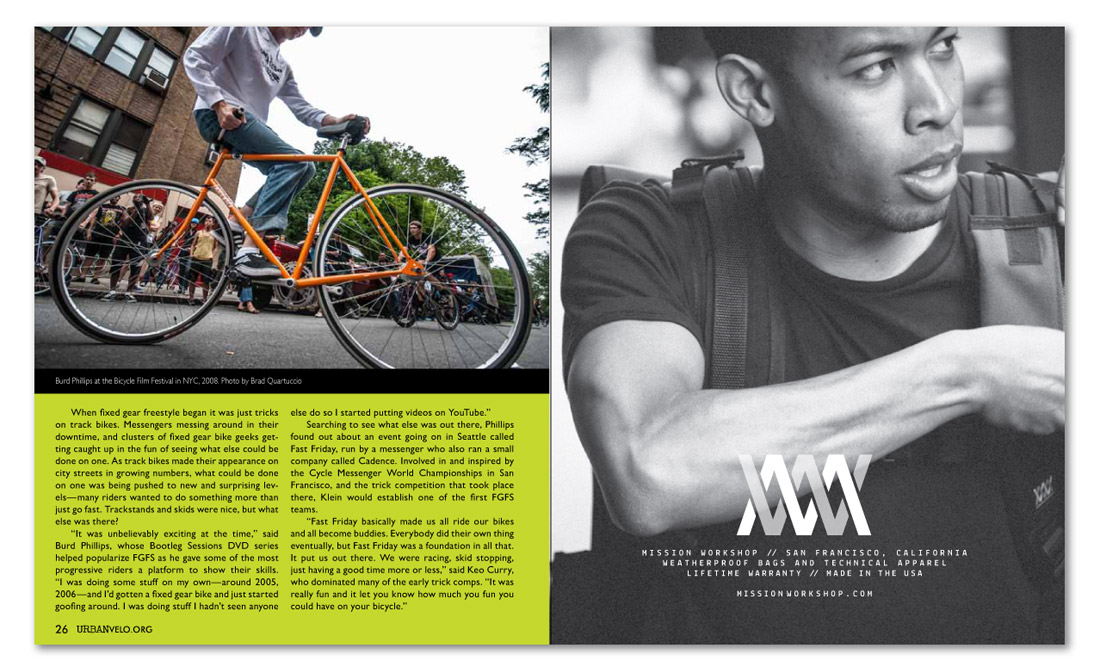


When fixed gear freestyle began it was just tricks on track bikes. Messengers messing around in their downtime, and clusters of fixed gear bike geeks getting caught up in the fun of seeing what else could be done on one. As track bikes made their appearance on city streets in growing numbers, what could be done on one was being pushed to new and surprising levels—many riders wanted to do something more than just go fast. Trackstands and skids were nice, but what else was there?
“It was unbelievably exciting at the time,” said Burd Phillips, whose Bootleg Sessions DVD series helped popularize FGFS as he gave some of the most progressive riders a platform to show their skills. “I was doing some stuff on my own—around 2005, 2006—and I’d gotten a fixed gear bike and just started goofing around. I was doing stuff I hadn’t seen anyone else do so I started putting videos on YouTube.”
Searching to see what else was out there, Phillips found out about an event going on in Seattle called Fast Friday, run by a messenger who also ran a small company called Cadence. Involved in and inspired by the Cycle Messenger World Championships in San Francisco, and the trick competition that took place there, Klein would establish one of the first FGFS teams.
“Fast Friday basically made us all ride our bikes and all become buddies. Everybody did their own thing eventually, but Fast Friday was a foundation in all that. It put us out there. We were racing, skid stopping, just having a good time more or less,” said Keo Curry, who dominated many of the early trick comps. “It was really fun and it let you know how much you fun you could have on your bicycle.”